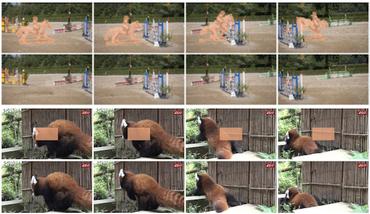Semi-Supervised Video Inpainting with Cycle Consistency Constraints
Deep learning-based video inpainting has yielded promising results and gained increasing attention from researchers. Generally, these methods usually assume that the corrupted region masks of each frame are known and easily obtained. However, the annotation of these masks are labor-intensive and expensive, which limits the practical application of current methods. Therefore, we expect to relax this assumption by defining a new semi-supervised inpainting setting, making the networks have the ability of completing the corrupted regions of the whole video using the annotated mask of only one frame. Specifically, in this work, we propose an end-to-end trainable framework consisting of completion network and mask prediction network, which are designed to generate corrupted contents of the current frame using the known mask and decide the regions to be filled of the next frame, respectively. Besides, we introduce a cycle consistency loss to regularize the training parameters of these two networks. In this way, the completion network and the mask prediction network can constrain each other, and hence the overall performance of the trained model can be maximized. Furthermore, due to the natural existence of prior knowledge (e.g., corrupted contents and clear borders), current video inpainting datasets are not suitable in the context of semi-supervised video inpainting. Thus, we create a new dataset by simulating the corrupted video of real-world scenarios. Extensive experimental results are reported to demonstrate the superiority of our model in the video inpainting task. Remarkably, although our model is trained in a semi-supervised manner, it can achieve comparable performance as fully-supervised methods.
PDF Abstract CVPR 2023 PDF CVPR 2023 Abstract

 DAVIS
DAVIS